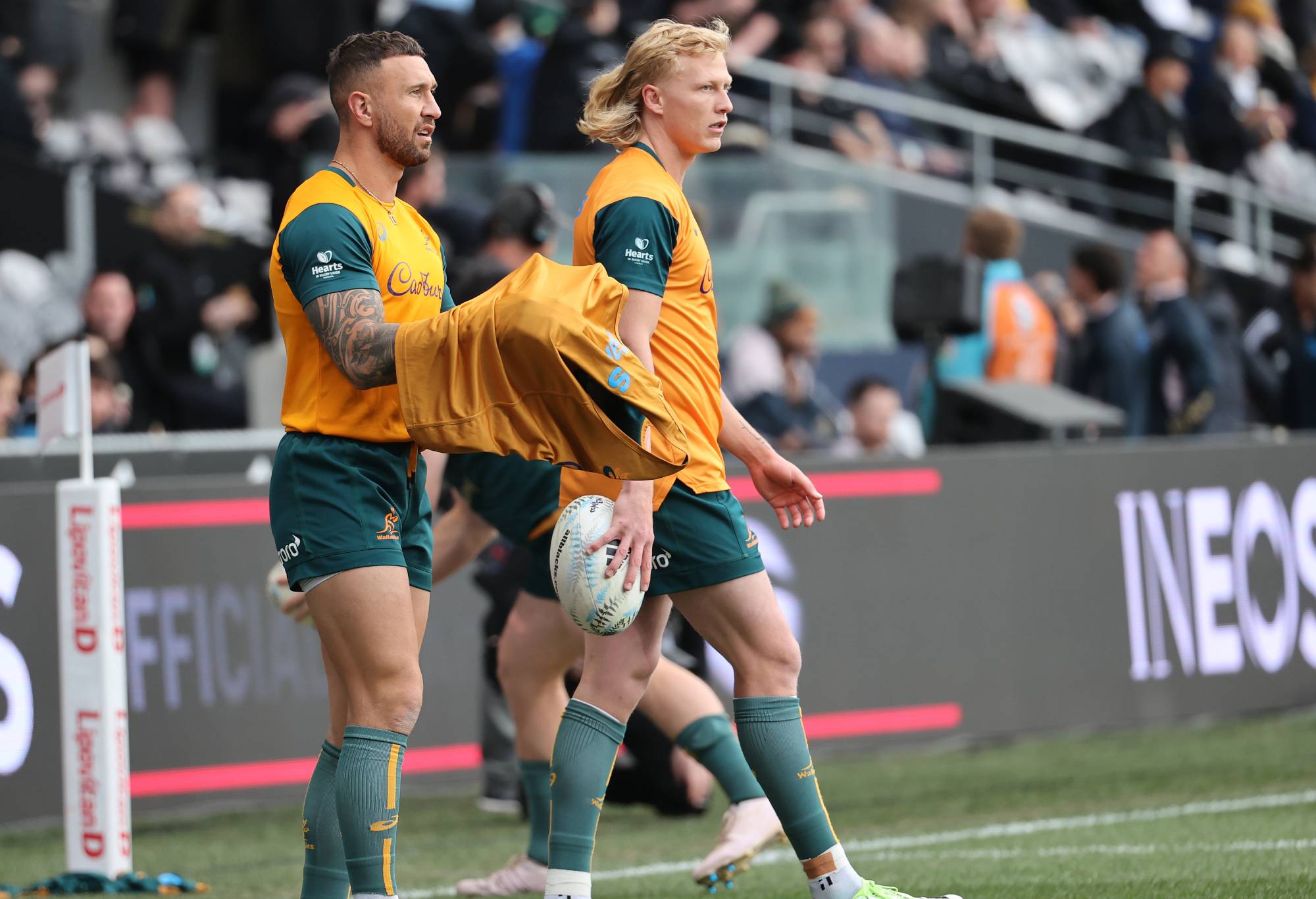Who does Kurtley Beale think should be Wallabies captain? - The Roar Rugby Podcast
Who does Kurtley Beale think should be Wallabies captain? Matt Toomua put the question to the 95-capped veteran on the Roar Rugby Podcast! LISTEN:…
For the last three World Cups, the performance of the Wallabies’ flyhalf has been intrinsically linked to the performance of the team itself. And for a team spearheaded by a 22 year old with four caps and four losses, this does not bode well for the upcoming tournament. But to further analyse our world cup hopes we must look back in time.
In 2011, Super Rugby and Tri-Nations winning 10, Quade Cooper couldn’t emulate his form from earlier in the year and proved to be wildly inconsistent, resigning Australia to the same fate. This tournament they placed third, yet lost to Ireland and conceded 22 points to a poor Russian team. Cooper and Australia’s form was epitomised in the semi final against hosts and favourites New Zealand, in which Quade Cooper opening kickoff was sprayed wildly into touch. Australia never recovered, and were toothless in attack for a 20-6 loss.

Playmakers Quade Cooper and Carter Gordon of Australia warm up before The Rugby Championship & Bledisloe Cup match between the New Zealand All Blacks and the Australia Wallabies at Forsyth Barr Stadium on August 05, 2023 in Dunedin, New Zealand. (Photo by Peter Meecham/Getty Images)
In 2015, Bernard Foley experienced a near identical leadup to Cooper in 2011, victorious in Super Rugby (in 2014) and taking home the newly named Rugby Championship. However, it was Foley who was able to continue this form, and Australia were thankful for it. Foley demolished England in the group stages, with a 28 point performance including two tries straight through the heart of the English defence (or lack of). He was again the hero in the quarter finals, with his penalty goal sailing over the black dot for a one point victory after the siren. Foley’s Wallabies won 6 games on the trot, and were only beaten by a masterclass from vintage, world player of the year Dan Carter. Foley was threatening in his running game, and tactical and precise with both his passing and his kicking.
The Wallabies 2019 campaign could only be described as underwhelming, led by flyhalves well beyond their peaks. A team that earlier in the year set a record for their greatest defeat over the all blacks, which was to be fair mainly instigated by Nic White, lost both their tier 1 matchups to crash out of the tournament in the quarter finals. Michael Cheika had 3 mediocre, ageing flyalf options at his disposal, an issue compounded by his refusal to utilise a tactical kicking game, or pick and stick with one of his 10’s. Some may rightly argue that the Wallabies game plan in this world cup was largely centered around the halfbacks, yet it cannot be denied the impact a flyhalf will have. Neither Foley, Leali’ifano, or To’omua were never given time to gel with the game plan nor the players around them and therefore the Wallabies were never quite as dangerous in attack as they needed to be.

Bernard Foley during an Australian Wallabies training session at Sanctuary Cove on September 13, 2022 in Gold Coast, Australia. (Photo by Chris Hyde/Getty Images)
So what does this mean for Carter Gordon and the Wallabies 2023 world cup hopes?
Well Eddie Jones has already avoided the biggest mistakes of Cheika in 2019. Despite having just a few months before the tournament, Jones has managed to promptly identify who will be his primary playmaker, and given him as much time in the saddle as was possible. And I am inclined to agree with him on his assesment of Carter Gordon.
Quade Cooper was always going to struggle to return from injury at his age, and seemed to lack the footwork and flair that had complemented his game management. Gordon is staunch in defence, and with a powerful boot and accurate pass. And his goal kicking shortcomings have been greatly exaggerated.
Goal kicking is a confidence game, especially for a player who has never consistently kicked at a professional level. There are no glaring technical issues and once he is settled into test rugby he will begin to kick as he did against the All Blacks in Dunedin. And as seen against France or the All Blacks in Melbourne, his work off the tee dictates the rest of his game. And the solution of handing the tee to Ben Donaldson would shred Gordon’s confidence to the same extent kicking poorly would.
So as history dictates, the Wallabies must rally behind their young playmaker and pray for his Super Rugby form to shine through.